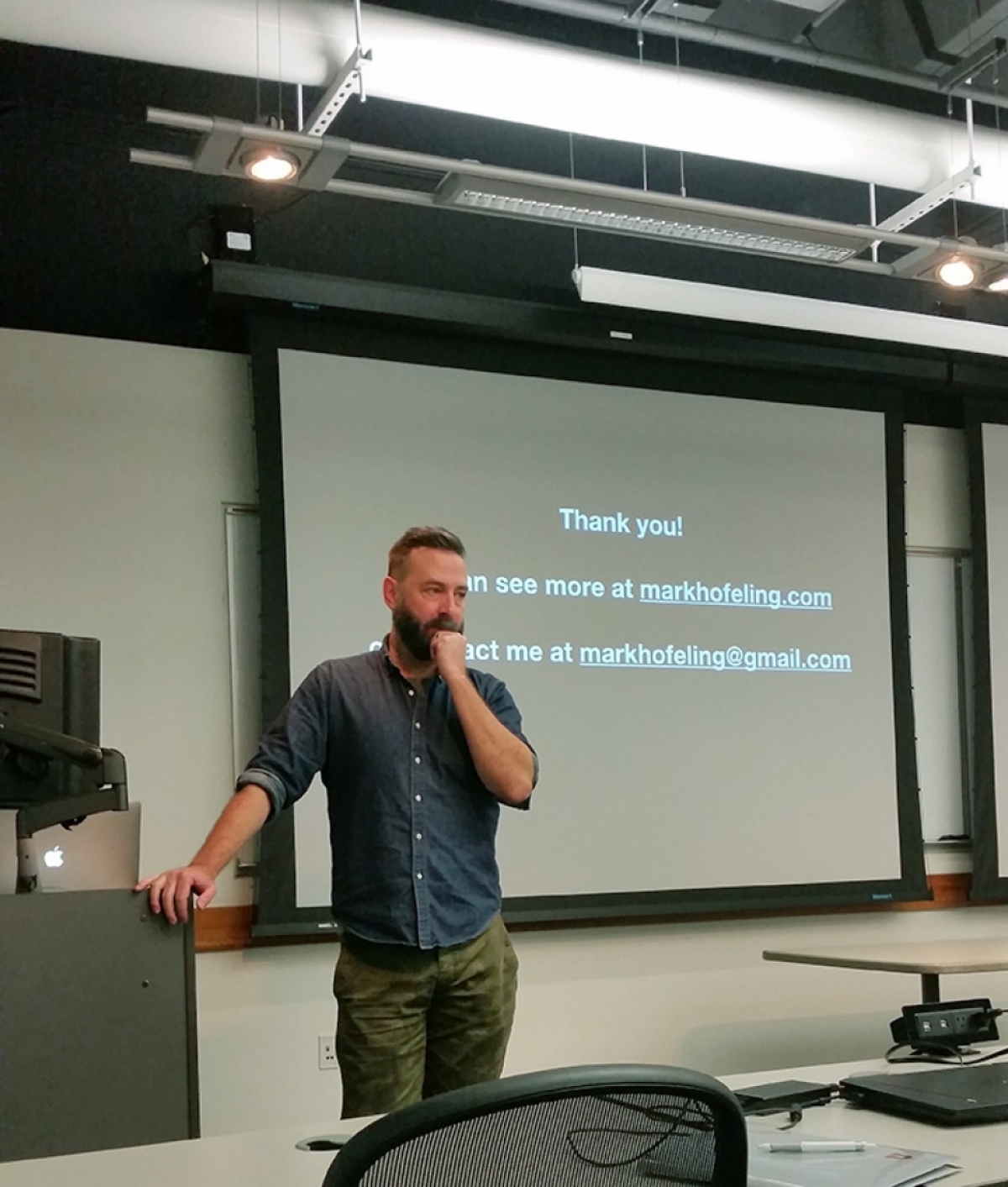By School of Dance Assistant Professor Kate Mattingly
“Everything in a room is designed for the actors’ bodies and for the choreography,” said Mark Hofeling, a production designer who has designed over 50 films and television shows, including the High School Musical series and Teen Beach Movie. Hofeling came to the U to talk to the ballet history students early in the morning on November 13th, and his lecture spanned from battling loneliness as a child to working closely with director Kenny Ortegafor a decade.
After his talk, the ballet students had a chance to ask Hofeling about his career and also to view and analyze recent film projects by Justin Peck (The Times Are Racing) and William Forsythe (Alignigung). Hofeling’s insights into the filming techniques (and costs!) were eye-opening. Students’ questions spanned from “does it help to have a camera-man who understands dance?” to “did you get a lucky break?” The answer to both questions was “Yes!”.
Hofeling grew up in Salt Lake City and attended the U briefly before embarking on his film career at age 19. One of his first jobs was building a Mickey Mouse out of snow for a Disney Ice Palace. Soon (about a decade later) his duties expanded to designing over 20 Disney Channel Original Movies, including the three most watched cable movies of all time: High School Musical 2 (2007), Wizard's of Waverly Place, the Movie (2009), and Teen Beach Movie(2013).
As Hofeling explained during his lecture, one of the advantages of filming dance scenes in musicals is that the shots include groups of 10 to 20 people so audiences can see his entire design for a room (floor to ceiling). In films that aren’t musicals, shots typically include close-ups of 2 or 3 people, making much of the rooms they inhabit invisible.
When we watched examples of recent films made by choreographers, even Forsythe’s Alignigung which appears to have “no set,” Hofeling showed how each project has to be carefully designed using lights and camera angles. In the case of Alignigung, there’s special attention to how to obliterate shadows and create the feeling of two dancers suspended in an endless void. Students noticed the ways that filming techniques can increase intimacy and provide a more detailed experience for a viewer. Film projects also hold the potential of making dancing available to people who may never go to a ballet performance. Hofeling revealed that after High School Musical opened, enrollment in dance classes across the country skyrocketed.
For Hofeling, film has been both an outlet––a way to engage his intense intelligence and imagination––and a respite––a way to escape a brutal childhood and a family who did not accept him. Hofeling told the class about seeing the Millennium Falcon inStar Wars in 1977 and discovering an alternate universe where anything seemed possible. Asked if he thinks movies hold the same potential today, especially in a world where destruction and violence are rampant, Hofeling answered “Yes” unequivocally. “I wouldn’t be here if it wasn’t for movies,” he explained. Those two hours in a theater were his way of escaping the abuses of his family and envisioning a better world. As audiences of his films today, we are the lucky ones who get to immerse ourselves in his brilliant and captivating designs.
(This story was originally posted on the School of Dance website)


